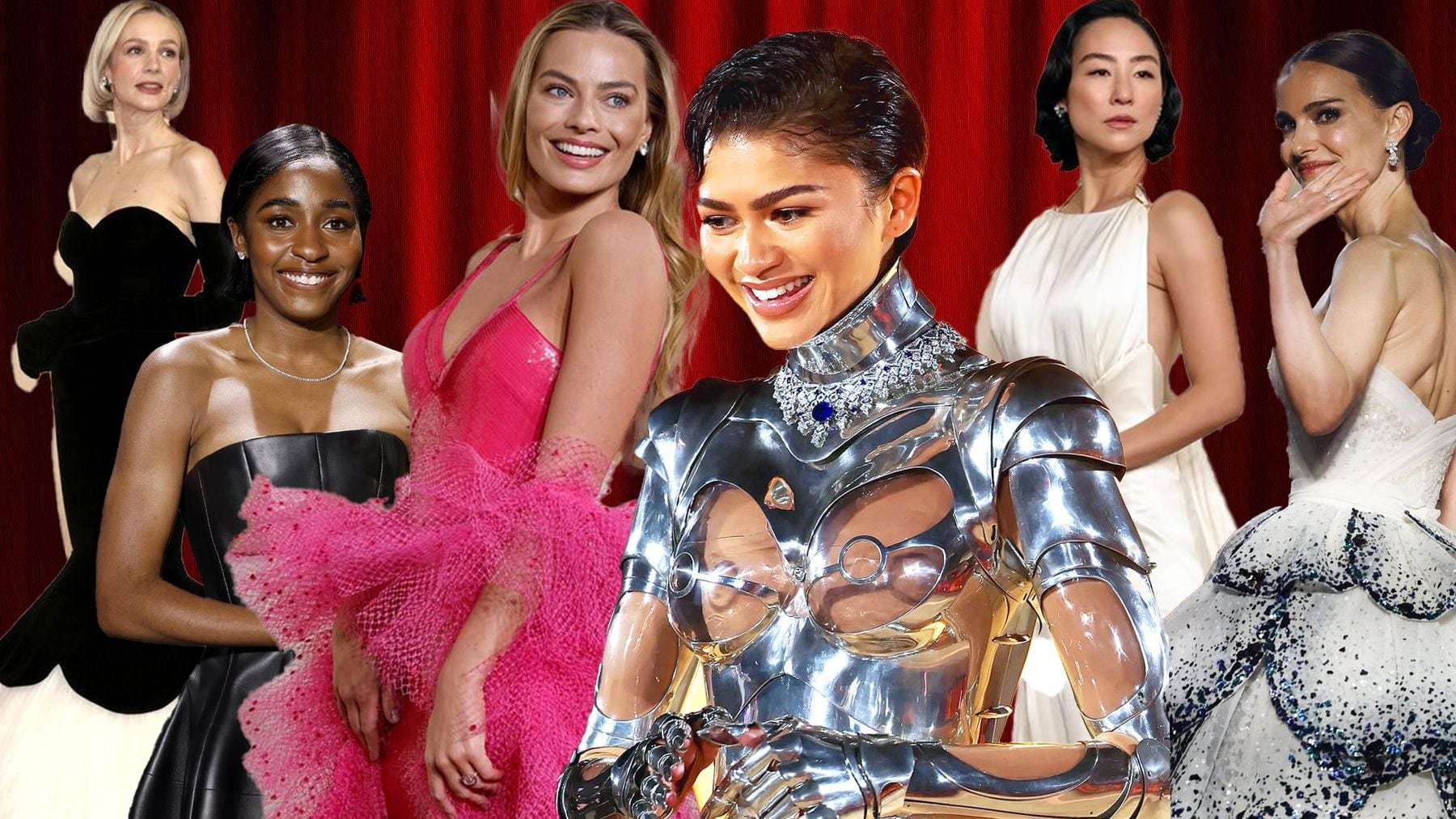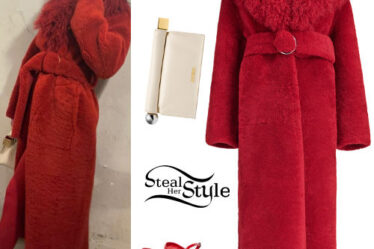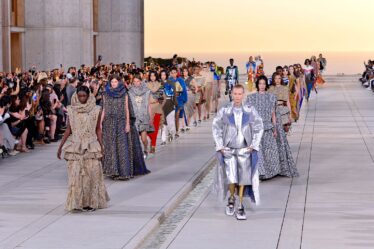
Monday’s Met Gala may be fashion’s most-talked about red carpet, but this year, it’s had some serious competition.
Awards season at the start of the year brought several blockbuster fashion plays, including Carey Mulligan in archival Balenciaga and Sandra Hüller in custom, cutting Schiaparelli at the Oscars, as well as quieter coups like Danielle Goldberg’s styling of Greta Lee and Ayo Edebiri, leading to their minting as clotheshorses to watch. Aubrey Plaza’s viral yellow, pinned Loewe gown helped further solidify the arty Spanish label’s status as a red carpet staple.
Most recently, all eyes followed Zendaya’s every accessory — tennis balls and all — last month during the press tour for her new film “Challengers.” The actor, who is styled by Law Roach, is set to make her much-anticipated return to the Met steps as a co-chair; her last appearance was in 2019.
The red carpet has long been an object of fascination, but lately, it’s been impossible to escape. In the first four months of 2024, red carpet-centric chatter online was up 12.4 percent from the same period 2023, according to social media analytics firm Brandwatch. Stars are wearing more custom gowns, significant archival looks and outfits inspired by the film they’re promoting or the event they’re attending.
As attention paid to the red carpet has grown, so has brands’ interest in dressing celebrities for it.
“We’ve seen probably the most interest in the red carpet in many, many years, especially from European luxury brands,” said Robert Burke, New York-based luxury consultant.
Even as the ante for what makes a stand-out red carpet moment has been upped, the same basic formula for standing out still applies: The right dress on the right person at the right time can get people talking. But brands, studios, celebrities and stylists are increasingly looking to the carpet as a place to do more storytelling, and deploying strategies specifically to get people talking online, rather than make a splash in person.
“What’s new is everyone is everywhere all at once all the time because of social media,” said stylist Elizabeth Saltzman, who counts Elizabeth Debicki and Julia Garner as clients.
Behind the Buzz
Since Giorgio Armani started dressing stars like Robert de Niro and Julia Roberts in the 1990s, the red carpet has been a big business for luxury brands. Now, however, movie studios have a more vested interest in attracting red carpet attention.
Box office sales, which cratered during the pandemic, still haven’t recovered. Facing new competition from streaming platforms, studios have to get creative to build excitement to get people back into cinemas. They’re using press tours as extended previews, with fashion as a focal point.
“The power of digital media has turned the modern press tour into much more of a narrative,” said Andrew Mukamal, the stylist behind Margot Robbie’s “Barbie” press tour, which included several recreations of the doll’s iconic outfits. “You have this direct connection with the potential audience, starting months and weeks in advance.”
For brands looking to build awareness, there is no more immediate, far-reaching way to tell a story than on the red carpet, said Burke. After years of going big on influencers, luxury brands — facing a wider slowdown in the sector — are focussing on their most famous faces and exclusive events.
“Everything is shrinking, everyone is protecting their own. Influencers were very important for several years. Now that arena has become too crowded and too common unless you do it really well,” said Saltzman.
There’s also motivation for stylists to make the most out of every red carpet moment. Though there’s always been exceptions, like Roach and stylist-turned-reality TV star and designer Rachel Zoe, most stylists have historically background players with convoluted revenue streams. Today’s stylists have more opportunity to build their public profiles. Goldberg, for example, was the subject of a New York Times profile in February, and Mukamal leveraged his “Barbie” tour styling into a coffee table book.
“[The red carpet] is becoming more and more of a career tool for any creative on our side of the image making to utilise and to create their narrative as artists,” said Mukamal. As well, studios are now often willing to pay for more looks on longer press runs, he added.
Celebrities, meanwhile, use fashion to shape their careers. Proving to a fashion house or studio an actor can start a conversation could help nab their next big contract.
“Fashion houses will say, ‘Oh, that person is interesting, they can get us even more press,’” said Luke Meagher, the critic behind YouTube channel Haute Le Mode, which shares reviews and industry analysis.
The New Rules of the Red Carpet
The red carpet changes are driven by brands, celebrities, studios and stylists’ desire to use it as a place for storytelling.
Wearing an outfit inspired by a film has seen a particular burst in popularity recently, though it’s not an entirely new trend. In 2018, Blake Lively wore her “A Simple Favor” character’s signature suits leading up to its premiere, and Lupita Nyong’o dressed in structured, warrior-like dresses for the “Black Panther” run in 2018, for example.
The idea has roots in the old Hollywood studio system, where stars were dressed to match who they played on screen as part of the movie promotion machine, said Avery Trufelman, fashion historian and host of the fashion-focussed “Articles of Interest” podcast. Now, she said there are more stakeholders, but the effect is the same: provide entertainment and build a fantasy. It helps brands insert themselves into the zeitgeist, plus, “it’s fun,” said Saltzman, who is currently prepping a themed run for one of her clients.
When it works best, themed looks marry the brand with the essence of the character without looking like a costume, said Mukamal. Plus, it can inspire viewers to do the same, which helps fill cinema seats, a boon for the studios — fans attended “Barbie” screenings, for instance, decked out in pink.
As magazine covers and editorials have become less important for brands, press tours have begun to fill the void, with brands vying to be included, said Mukamal. Those appearances can be valuable: In just four weeks, Zendaya’s “Challengers” fashion drove $8.8 million in media impact value, a measure of buzz across media from performance measurement firm Launchmetrics for Loewe. For comparison, Beyoncé drove $8.9 million for the brand, which designed several of her “Renaissance” tour looks, over six months.
Archival ensembles, also on the rise, can be a tool for educating consumers or pushing a certain narrative.
“It creates this unprecedented fashion literacy,” said Trufelman. “Conversation around the red carpet has gotten precipitously nerdier. Everyone’s like ‘Miley in archive Margiela,’ and who would’ve cared three years ago?”
Balenciaga put Mulligan in a recreation of a 1950s-era dress at this year’s Academy Awards, which helped emphasise the brand’s heritage and divert eyes from recent unsavoury headlines. At the same event, Dior dressed Anya Taylor-Joy in a recreation of its famed Junon dress from 1949; it also put Natalie Portman in another version of it last year at the Cannes Film Festival, creating a sense of continuity for the brand.
Plus, people love to show off their knowledge of niche moments and fashion history online, said Meagher, which fuels virality. Whether working with a brand a la Zendaya’s Mugler 1995 robot suit on the “Dune 2″ press tour or pulling from a vintage dealer, like Sydney Sweeney’s Oscars afterparty dress, the same Marc Bouwer gown Angelina Jolie wore in 2004 — archival looks with meaning behind them have become a sure way to make headlines.
More is to come on the Met Gala red carpet, where fashion’s latest fixations — theme and archive — will merge. This year’s Costume Institute exhibit, “Sleeping Beauties, Reawakening Fashion” highlights rare, fragile items from fashion history; the gala’s “The Garden of Time” theme is expected to bring a number of archival pieces to the red carpet — and viewers will be watching to see who can pull the most eye-popping and unexpected looks. Still, it’s important for brands to be strategic.
“You have to be creative, you can’t just throw money at it,” said Saltzman.



